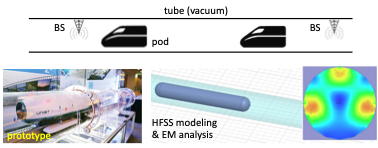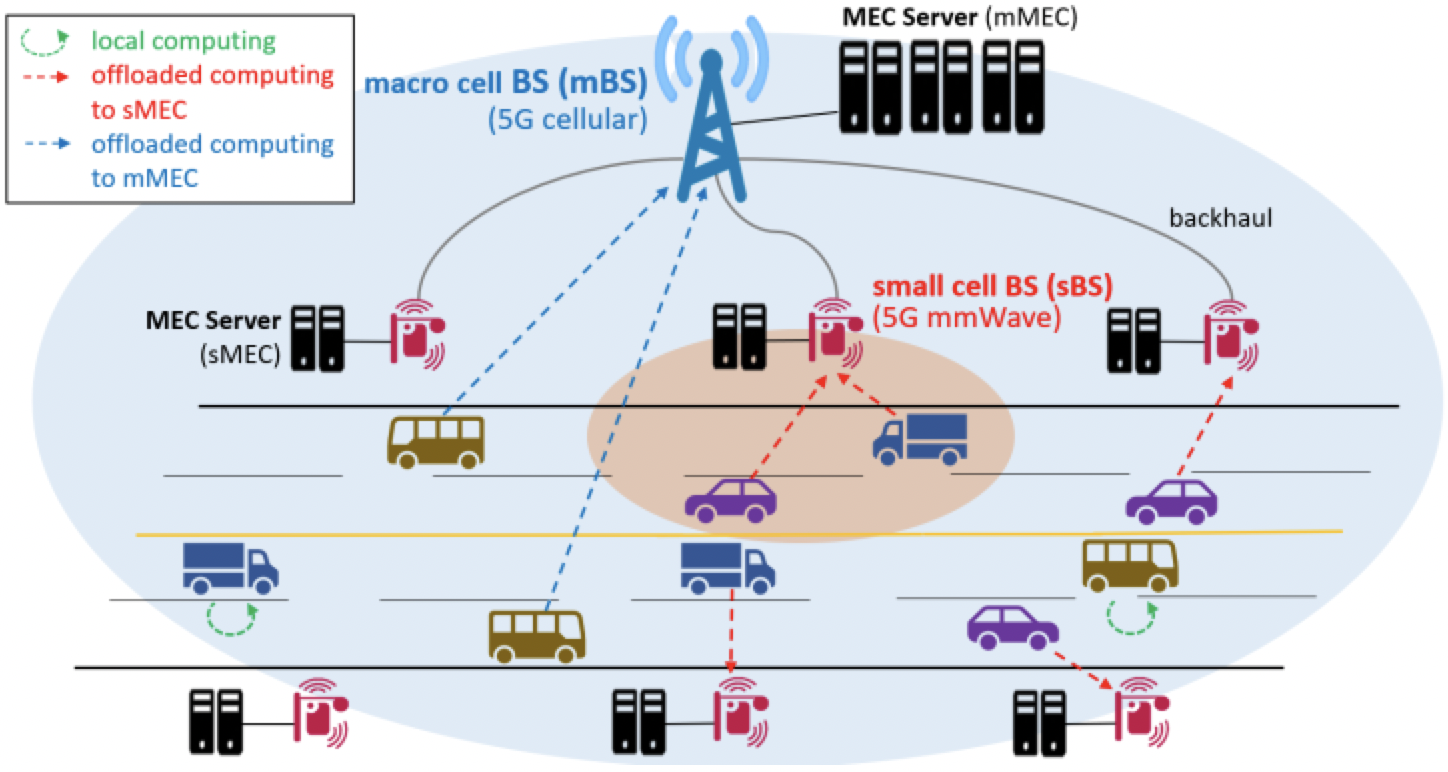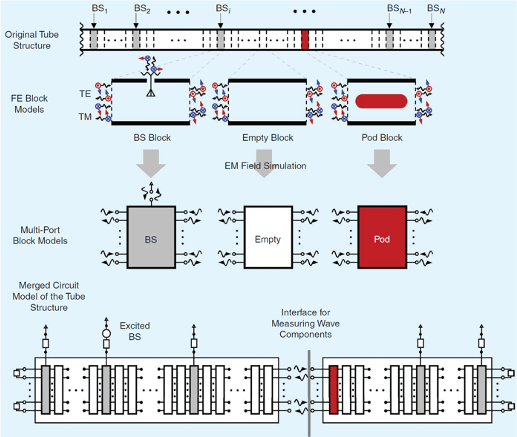Future smart mobility should require heavier computations and more reliable data transfer, e.g., computational tasks for autonomous driving, LiDAR/radar/camera sensor data transmission via V2X communications. In this regard, the WMNL is investigating the problem of task offloading from multiple coexisting vehicles to road-side 5G mobile edge computing (MEC) servers (see the illustration below), where resource-limited smart vehicles can rely on more powerful computation resources (i.e., MEC servers) at the edge of the 5G network. To do so, vehicles should transmit all the necessary data (e.g., program code to run, internal states) to the MEC servers via 5G communication links. More specifically, we consider two 5G communication interfaces, cellular and mmWave, and try to capture the tradeoff in selectively utilizing them.
We are also investigating how wireless communications should be re-designed for Hyperloop, which is a levitating bullet-train travelling at 1,200km/h inside a near-vacuum metal tube (see the illustration below). The communication environment in the Hyperloop tube is unprecedented, since there exist ultra-fast mobile transceivers inside the waveguide-like structure (i.e., the tube). This makes it a unique communications environment that has never been studied before. To tackle the research on such a challenging environment, we have developed a new computationally-efficient and scalable EM analysis methodology that can fully analyze the internal EM environment of the gigantic tube based on the concept of ‘multiport microwave circuit’ and the integration of small block modules (see the bottom most illustration). Using our novel methodology, we have completely analyzed the Hyperloop’s EM environment and revealed its hidden features (in its 500km-long tube) for the first time in the world, which has been published in our IEEE VTM ’22 paper.

On the other hand, we are also investigating the communication network for supporting next-generation mobility like UAM. This research is also closely related to 6G’s vision of combining TN (terrestrial network) with NTN (non-terrestrial network). For more details, please refer to ‘5G/6G‘.


